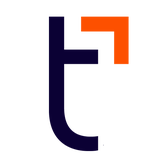Employee Benefits Administration Services: Are You Covered?

Table of contents
- 1.What Is a PEO and How Does It Work?
- 2.Core Employee Benefits Administration Services
- 3.Health insurance
- 4.Retirement plan administration
- 5.Supplemental benefits coordination
- 6.Leave management
- 7.Technology and communication
- 8.Where Do I Find Employee Benefits Administration Services?
Many small and medium-sized businesses strive to provide benefits to their employees. Business leaders know that good benefits can help with recruiting talent and enhancing employee engagement.
However, along with the challenge of aligning attractive benefit packages, businesses also face the difficulties of administering them. The pressures often lead SMBs toward outsourcing solutions that include employee benefits administration services. The HR services typically include administering health insurance, retirement plans, time off, wellness initiatives and other compensation packages.
Employee benefits administration is becoming increasingly complex due to several factors:
- Regulatory changes. Frequent updates to benefits compliance requirements means monitoring and compliance.
- Diverse workforce needs. Employees expect a broader range of benefits, including mental health support, flexible work arrangements and financial wellness programs.
- Technology integration. Benefits administration platforms and HR information systems are essential for efficient administration, data consistency and smooth employee experiences.
- Globalization. Multinational organizations must navigate different requirements and cultural expectations.
Employee benefits administration services can deliver significant business value, including enhancement in talent attraction and employee retention, employee engagement, optimize cost and risk mitigation. The core services of benefit administration supports both businesses and employees.
What Is a PEO and How Does It Work?
A professional employer organization (PEO) is a third-party provider that enters into a co-employment relationship with a business. A PEO becomes the employer of record for payroll tax and insurance purposes. This means that the PEO takes on certain responsibilities such as payroll taxes, workers' compensation and benefits administration on behalf of the client.
PEOs help handle a broad range of HR functions, including payroll, benefits, compliance support, risk mitigation and HR administration. However, the business retains control over day-to-day operations and strategic HR decisions.
A PEO could give a business access to a wider range of benefits. A single PEO could support many clients and worksite employees, for example.
PEOs also provide HR experts and powerful, up-to-date technology, including a human resources information system (HRIS). This helps SMBs with benefits enrollment, claims processing and compliance, streamlining the process for both employers and their employees.
Core Employee Benefits Administration Services
Benefits are an important recruiting tool and a great way to drive employee satisfaction. HR outsourcing helps businesses stay competitive, reduce administrative burden and enhance employee satisfaction. Let's review the most sought-after services.
Health insurance
Health insurance is the most common and valued employee benefit, with 72% of private industry workers and 89% of state and local government workers having access to employer-sponsored medical care benefits.
Employer-provided health insurance helps to protect employees from high medical costs, supporting their financial stability and overall well-being.
To build a benefits package, a business owner may start by analyzing workforce demographics and assessing plan options. Employers must negotiate with insurance brokers and/or carriers to balance benefit costs, coverage and employee needs.
The goal is to obtain favorable terms for premium, cost-effective coverage. Small-business leaders may lack the expertise and resources to negotiate on benefit packages. On the other hand, PEOs may be positioned to provide access to competitive benefits and enhanced service levels.
Likewise, a PEO could be better-suited to administer benefits through its platform and support the compliance requirements with help of its experts.
Retirement plan administration
Retirement plan administration is fraught with pain points. It requires dedicated resources, expert support and a proactive approach to both regulatory and participant needs. At the same time, effective retirement plan administration is essential for helping employees reach their financial planning goals. PEO employee benefit services can help a small business address problems such as:
- Sponsoring a 401(k) plan, which involves navigating a maze of compliance requirements and access to a vendor.
- Day-to-day administration tasks, such as payroll uploads, eligibility tracking and handling investment changes.
- Underutilization of benefits, which can occur when employees don't understand the value of retirement plans or how to enroll. More than 1 in 10 employees (13%) say they aren’t confident they elected the right health plan for their needs.
- Communicating plan benefits and changes may require education campaigns as well as explanations and reminders of enrollment services.
- Errors in compliance can lead to significant penalties, plan disqualification, or costly corrections. Common pitfalls include late deposits of employee contributions, plan document defects and failure to update plans with new legal requirements. Preparing for and responding to IRS reviews requires meticulous recordkeeping and proactive error correction, which can strain resources.
- Plan sponsors may be responsible for monitoring investment options and making sure fees are reasonable. Many small business owners or internal administrators lack the expertise or time to fulfill these duties.
Supplemental benefits coordination
The coordination of supplemental benefits may be hindered by complex eligibility rules, low employee awareness, regulatory changes, fragmented program structures and communication challenges. A benefits strategy needs to address these challenges with integrated systems, targeted education and ongoing review to make sure employees can access and fully benefit from these valuable programs. Here are some difficulties that HR outsourcing can support:
- Life and disability insurance often comes with complicated eligibility rules and exclusions, such as pre-existing condition limitations and waiting periods. These complexities can lead to confusion among employees and HR teams. A PEO could help SMBs by facilitating communications with employees.
- Supplemental plans can be susceptible to anti-selection, where only those who anticipate needing the coverage enroll. This may drive up costs and affect plan sustainability. Monitoring and communication can help to mitigate this risk.
- Flexible spending accounts (FSAs) are challenging due to the "use-it-or-lose-it" provision, which requires employees to spend their balances before the plan year ends. This sometimes leads to unnecessary expenses. PEO services can help educate employees about this information so they can better use their accounts.
Leave management
Managing employee leave is a complex and high-stakes responsibility for HR teams, with multiple challenges arising from federal, state and organizational requirements. Here are some challenges addressed by employee benefits administration services:
- FMLA leave can be unpredictable and employees are able to take it in short intervals—sometimes just hours, such as for appointments. Manual tracking increases the risk of errors, such as over- or under-counting leave taken, and makes it difficult to ensure compliance and proper documentation. Determining FMLA eligibility and ensuring proper medical certification can also be confusing. Incomplete or unclear certifications from providers complicate administration. Employees may not always clearly state when they are taking FMLA leave, leading to mismanagement or missed compliance requirements.
- Employers operating in multiple states must comply with a complex web of state and local leave mandates, which often overlap or provide greater rights than federal laws.
- Coordinating disability leave with FMLA, ADA and state-specific requirements is highly complex. PEO experts can stay current on each law's eligibility, duration and documentation standards.
- When an injured or ill employee is ready to return to work, a lack of effective communication among the employee, employer, medical providers and claims professionals often leads to delays and confusion. A PEO can provide services that prevent the employee from feeling unsupported and disengaged.
- Without structured return-to-work programs, companies miss opportunities to improve cost efficiency and boost productivity by accommodating employees in transitional roles.
Technology and communication
SMBs often value employee benefits administration services because of the advantages they bring in technology and communication. Here's a quick look at some of the services that make benefits administration outsourcing a small business solution:
- Employee self-service portals. Benefits software gives employees convenient access to important information and services.
- Benefits enrollment platforms. A PEO can make it easy for employees to get information on benefits and enroll in a paperless environment.
- Reporting and analytics capabilities. The data gathered and processed by an HRIS can help business leaders make better decisions.
- Year-round employee education initiatives. HR experts using an HRIS can communicate regularly and efficiently with employees, supplying information where and when it is needed.
Where Do I Find Employee Benefits Administration Services?
Third-party administrators can lift the burden of benefits administration for small and medium-sized businesses, while enhancing efficiency and employee engagement.
TriNet’s benefits administration services are designed to make benefits easy for everyone. We integrate benefits administration with other critical HR functions to deliver a satisfying experience for both employers and employees.
Through our unified technology platform, TriNet connects HR, payroll and benefits administration, enabling automated syncing of benefit elections, payroll deductions and compliance support. This integration not only enhances data consistency and administrative efficiency, but also empowers employees to manage their benefits on the go through an intuitive mobile app.
To learn more about how you can access health benefits to offer to your employees and motivate your job candidates, download our free eGuide: Seven Ways to Help Control Runaway Health Insurance Benefit Costs.
This article is for informational purposes only, is not legal, tax or accounting advice, and is not an offer to sell, buy or procure insurance. It may contain links to third-party sites or information for reference only. Inclusion does not imply TriNet’s endorsement of or responsibility for third-party content.

TriNet Team
Table of contents
- 1.What Is a PEO and How Does It Work?
- 2.Core Employee Benefits Administration Services
- 3.Health insurance
- 4.Retirement plan administration
- 5.Supplemental benefits coordination
- 6.Leave management
- 7.Technology and communication
- 8.Where Do I Find Employee Benefits Administration Services?





